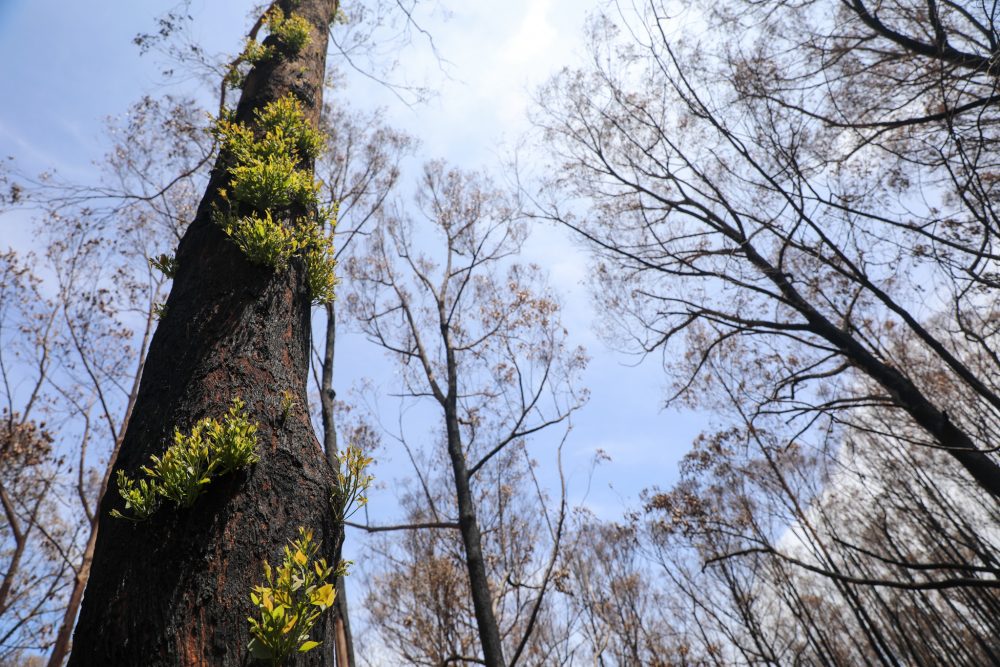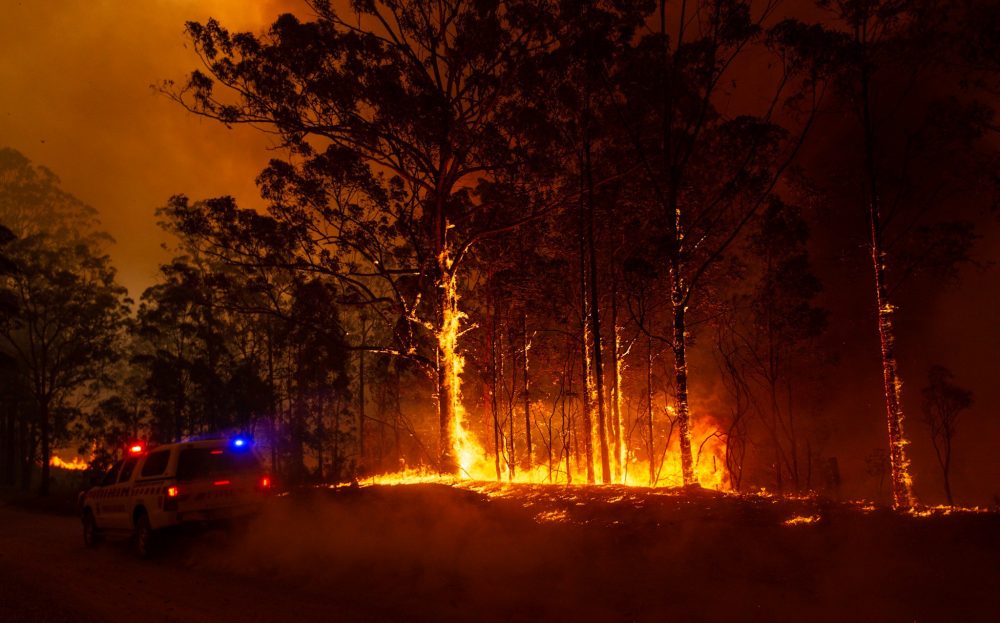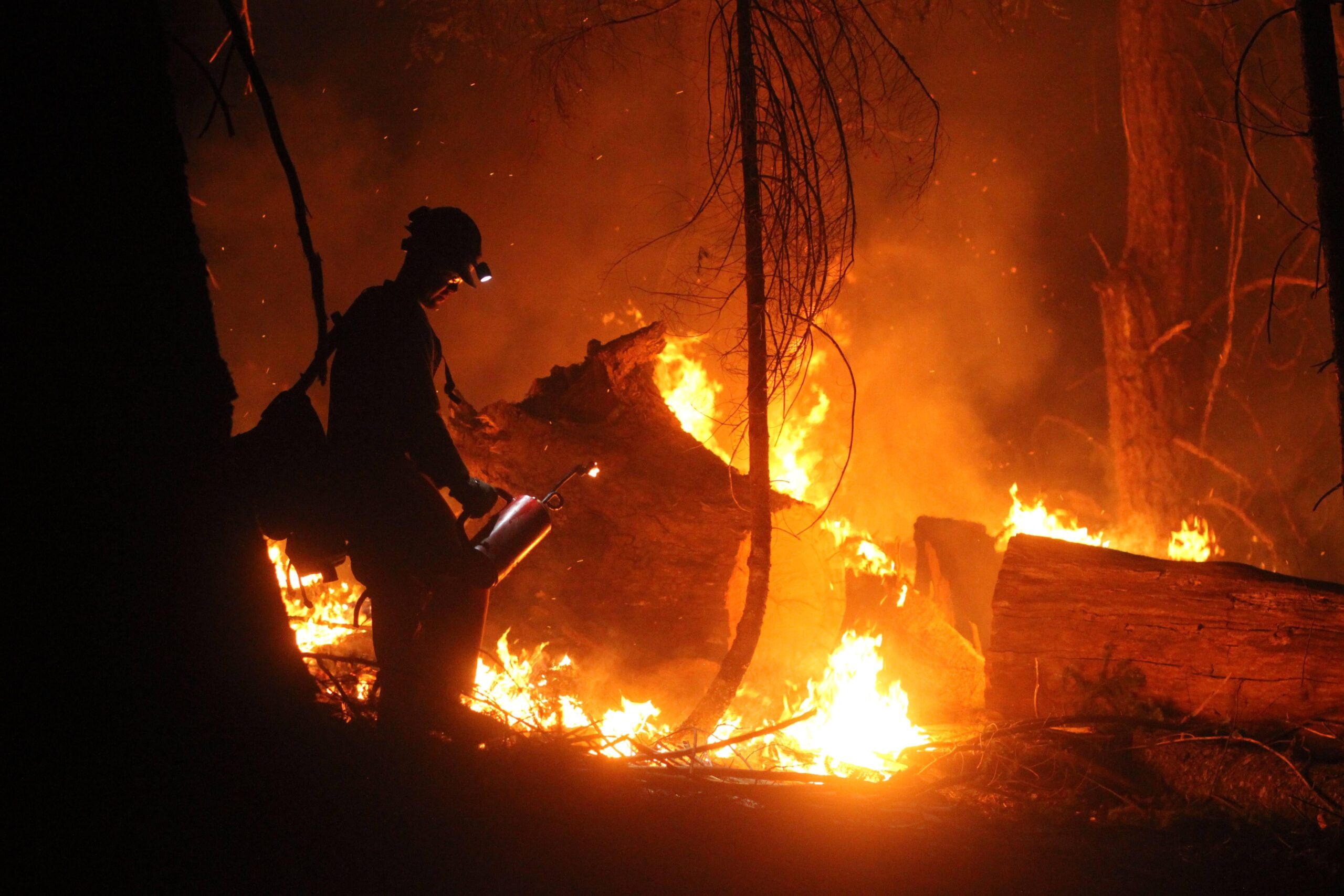
Last updated:
2019-2020 Australian Bushfires

Overview
Australia is no stranger to bushfires. However, the 2019-2020 season proved to be unprecedented in many ways.
The first major bushfires began even before the official arrival of spring in June and then new out-of-control fires sprung up at the beginning of Sept. 2019.
The fire situation worsened significantly at the beginning of November 2019 with increasing temperatures and a prolonged drought. In mid-January 2020, a wave of heavy rain finally brought relief in some areas hit by bushfires but was nowhere near sufficient to extinguish the fires. It did provide a respite for firefighters in some areas who had seen only occasional breaks in the weather in the previous months. Hotter temperatures, drought and high winds escalated the crisis again over the first weekend in February. In mid-February an extremely heavy rainstorm allowed firefighters to contain all of the fires in New South Wales (NSW), although fires continued to burn in Victoria. All of the fires were either extinguished or contained by March 4, 2020 – nine months after the first ones began to burn.
(Photo credit: Queensland Fire & Emergency Services)
Latest Updates

Supporting Australian Bushfires Recovery with $1.19M Grant to World Wildlife Fund
What was the impact on communities?
The bushfires burned more than 46 million acres (72,000 square miles) – roughly the same area as the entire country of Syria. At least 3,500 homes and thousands of other buildings were lost and 34 people died in the thousands of fires between September 2019 and March 2020. The majority of deaths and destruction were in New South Wales (NSW), while the Northern Territory accounted for approximately 1/3 of the burned area. At least 80% of the Blue Mountains World Heritage area in NSW and 53% of the Gondwana world heritage rainforests in Queensland (QLD) were burned. Many of the other buildings that were lost were farm buildings, adding to the challenge of agricultural recovery that is already complex because of ash-covered farmland accompanied by historic levels of drought.
The Insurance Council estimated that between November and the middle of February – when most fires were under control – bushfire losses were approximately $A1.9 billion (US$1.3 billion) in insured claims. It may not be possible to completely calculate the economic loss from the bushfires because of the difficulties in evaluating intangible losses such as loss of income and productivity, as well as the confluence with the impact from COVID-19. A survey conducted in January 2020 found that 26% of Australian businesses had already been affected by the bushfires. Some estimates have stated that the overall economic impact will exceed the infamous Black Saturday fires that cost $A4.4 billion (US$2.9 billion). There was also a significant impact on Australian fishing and tourism industries, which was compounded by lockdowns and travel bans related to COVID-19.
Who was affected and in what ways?
Several firefighters – called firies in Australia – were killed or injured. Many firefighters were volunteers and laid-off fire management staff who were asked to report back to work without pay.
University of Sydney ecologist Chris Dickman estimates more than a billion animals – including 800,000 in NSW – perished from the bushfires. His estimate is based on his research for the World Wide Fund for Nature, which found that in every hectare (2.5 acres) approximately “there are 17.5 mammals, 20.7 birds and 129.5 reptiles.” This is multiplied by the number of acres destroyed to get the total estimate.
Several endangered species are also facing the risk of total extinction. For example, more than a third of the koala population is thought to have been killed, while the loss of habitat will also significantly impact the species’ recovery. A study from Australia’s government found that 471 plants and 191 invertebrates were affected by the fires, with the most severely affected species losing at least 30% of their habitat. In addition, ranchers lost a large number of livestock.
Smoke from the fires darkened the skies in New Zealand, and continued to circle the globe for more than three months. According to an article in stuff.co.nz, “Niwa (National Institute of Water and Atmospheric Research) atmospheric scientist Dr Richard Querel said it was remarkable to be able to track a smoke plume for more than 100 days.”
As with all disasters and large-scale emergencies, it is most effective to donate money to groups already engaged and coordinating on the ground at the disaster site. They often can take that monetary donation and double or triple the value through local partnerships.
Rebuilding
The most significant ongoing need is appropriate resources and funds to rebuild communities, houses and other structures in ways that are resilient toward extreme bushfires. Some 3,000 homes, thousands of businesses and other buildings, including outbuildings, were destroyed. Insurance may not cover these losses, but it is important for the community, especially farmers, to rebuild.
Wildlife rehabilitation
Wildlife rehabilitation and animal recovery efforts will be ongoing for several years due to the extensive habitat destruction and the inconceivable loss of animals.
Support for firefighters
Given the large number of volunteer firefighters, even with the government assistance support, there is also a need to support them and help stabilize their incomes after being away from work for several weeks or months.
Tourism
Australia is also encouraging tourism once the COVID-19 pandemic has ended, citing the many areas of the country that have not been touched by fire. The Australian Tourism Industry Council estimates that the bushfires have cost the industry $A1 billion (US$690 million).

The Center for Disaster Philanthropy (CDP) has a Global Recovery Fund that provides an opportunity for donors to meet the ongoing and ever-expanding challenges presented by global crises.
Contact CDP
Recovery updates
If you are a responding NGO or a donor, please send updates on how you are working on recovery from this disaster to Tanya Gulliver-Garcia.
Donor recommendations
If you are a donor looking for recommendations on how to help with disaster recovery, please email Regine A. Webster.
Philanthropic and government support
Donations to the CDP Global Recovery Fund for Australian bushfire recovery went towards the following:
- Australian Red Cross Society was awarded $336,000 to support on-the-ground disaster services, immediate bushfire support, grants to individuals affected by the bushfires and a three-year bushfire recovery program. These include: 1) deployment of emergency teams to support evacuations, relief centers and training, 2) bereavement payments to next of kin for people who died in the fires and 3) emergency grants for people whose homes were destroyed.
- Foundation for Rural & Regional Renewal (FRRR) received $500,000 to support community-initiated and community-led projects that support the medium- to long-term recovery of bushfire-affected communities across rural, regional and remote Australia. FRRR fills an unmet need by providing small, targeted grants to grassroots nonprofit organizations that play a vital role in supporting community recovery. Making these grants available over three years provides crucial financial support for communities to continue to recover.
- With our third and final grant for the Australian bushfires, CDP awarded $1.19 million to the World Wildlife Fund (WWF) for long-term recovery efforts that are already underway. This gift, CDP’s largest international grant, focuses on wildlife and environmental restoration and addresses needs and gaps in the recovery, mitigation and prevention processes that are the most significant and most profound. The bushfires’ impact on Australia’s famed wildlife and the lands that hosted them left a far greater scar on the country when compared to the number of destroyed structures and the unfortunate loss of 34 persons.
On Jan. 6, 2020, the Australian federal government announced the formation of a National Bushfire Recovery Agency. In addition, the government pledged $A2 billion (US$1.4 billion) to help “ensure that the families, farmers and business owners hit by these unprecedented bushfires would get the support they needed as they recover.” The full amount had been committed as of May 11, with the announcement of funding to local communities to build back better after the bushfires.
Resources

Wildfires
Wildfires devastate homes, livelihoods and communities of people worldwide, making them one of the most destructive types of disasters. While climate change fuels the frequency and intensity of wildfires, wildfires themselves fuel climate change, making them uniquely damaging to the planet.

Is your community prepared for a disaster?
Explore the Disaster Playbook